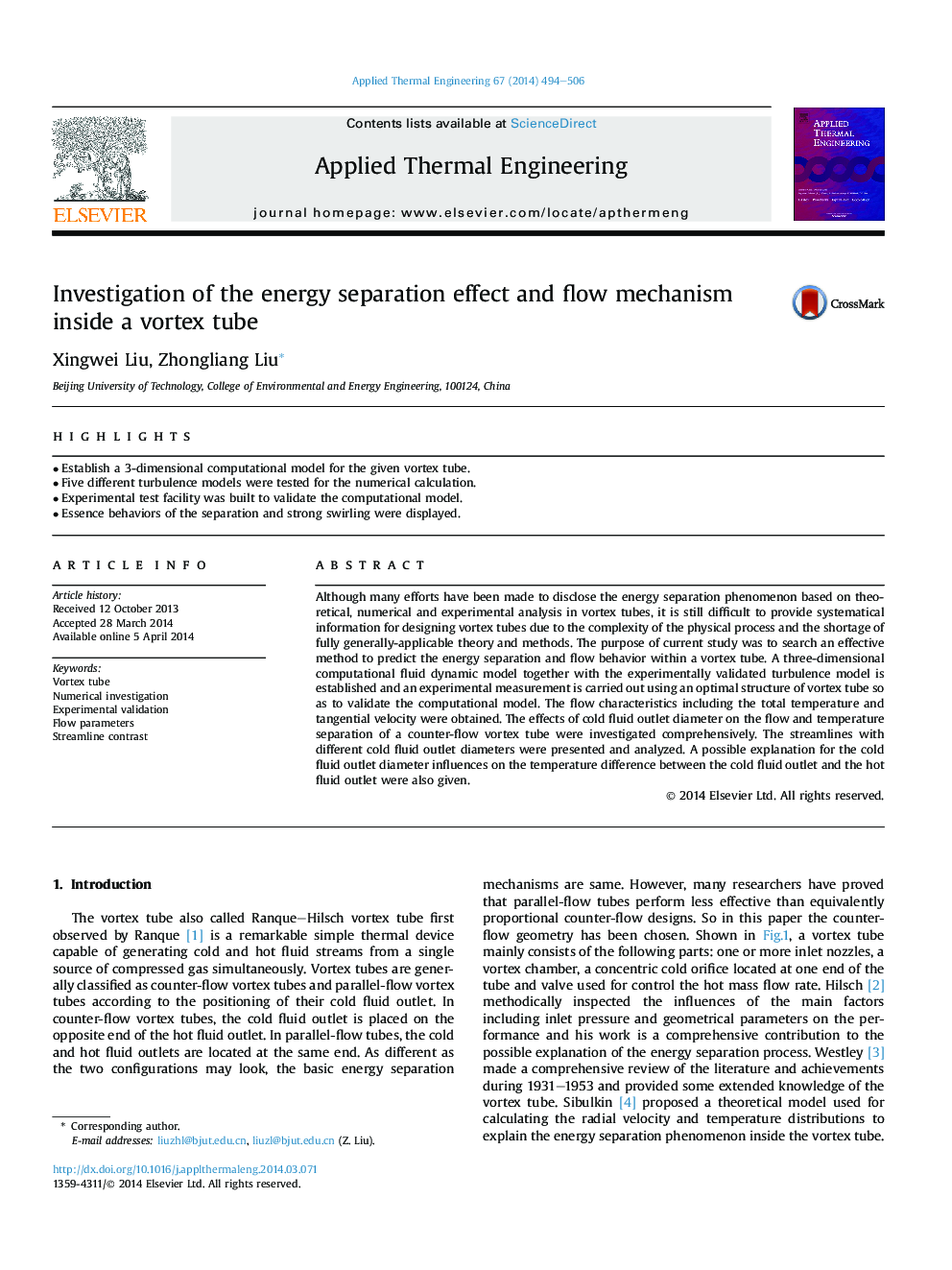| Article ID | Journal | Published Year | Pages | File Type |
|---|---|---|---|---|
| 646522 | Applied Thermal Engineering | 2014 | 13 Pages |
Abstract
Although many efforts have been made to disclose the energy separation phenomenon based on theoretical, numerical and experimental analysis in vortex tubes, it is still difficult to provide systematical information for designing vortex tubes due to the complexity of the physical process and the shortage of fully generally-applicable theory and methods. The purpose of current study was to search an effective method to predict the energy separation and flow behavior within a vortex tube. A three-dimensional computational fluid dynamic model together with the experimentally validated turbulence model is established and an experimental measurement is carried out using an optimal structure of vortex tube so as to validate the computational model. The flow characteristics including the total temperature and tangential velocity were obtained. The effects of cold fluid outlet diameter on the flow and temperature separation of a counter-flow vortex tube were investigated comprehensively. The streamlines with different cold fluid outlet diameters were presented and analyzed. A possible explanation for the cold fluid outlet diameter influences on the temperature difference between the cold fluid outlet and the hot fluid outlet were also given.
Related Topics
Physical Sciences and Engineering
Chemical Engineering
Fluid Flow and Transfer Processes
Authors
Xingwei Liu, Zhongliang Liu,
